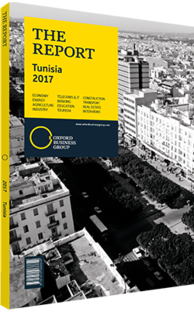Banking
The Company
Founded in 1959, Banque Nationale Agricole (BNA) was initially dedicated to financing the agricultural sector. It has since diversified, and now offers a full range of banking services.
As part of the process of public sector reform BNA underwent an audit, resulting in a restructuring plan revolving around the overhaul of the bank’s governance and organisation systems; the development of a commercial recovery strategy; reshuffling of the IT system; and the establishment of a human resources restructuring plan.
Unlike the two other state-owned banks, BNA did not benefit from state support to carry out a recapitalisation plan. The bank decided to sell parts of its non-strategic holdings to finance its restructuring.
Faced with unfavourable economic conditions and strong competition from private banks, BNA’s development has slowed during the last five years. It saw moderate deposit growth of 6% to TD6bn (€2.6bn), a lower rate than the sector’s average of 6.6%. Around 73% of BNA’s resources are derived from interest-bearing deposits, especially term deposits and savings deposits. This puts it at a disadvantage in terms of cost of resources compared to private competition (a rate of 3.88% for BNA versus an average of 3.32% for private banks).
As part of its business revival plan, the bank is intending to focus its future collection efforts on sight deposits in order to squeeze its cost of resources, and achieve average annual growth of 8% in deposits between 2016 and 2020.
Like its listed peers, BNA’s lending activity suffered a setback following the 2011 revolution. Loans outstanding showed weak growth of 4% during the last five years to TD7bn (€3bn). The lending capacity of the bank was hindered by the insufficient loanto-deposit ratio (an average of 85%) and the soaring delinquency rate. The high non-performing loans (NPL) ratio (24.8%) remains BNA’s major deficiency. By adopting a more selective lending policy, BNA should combine growth (an average loans growth rate of 5% from 2015-20) with portfolio quality (an NPL target rate of 18% in 2020).
Over the last five years BNA reported strong net banking income (NBI) growth of 7% to TD335m (€143.7m). This trend was mainly fed by the interest margin, which was up by 8% to TD221m (€94.8m) and remains the backbone of BNA’s revenues (66%). Future development of new products and revitalisation of the investment policy should boost NBI growth by 10% over the period 2015-20.
BNA’s earnings growth was uneven between 2011 and 2015, and was greatly influenced by the extent of provisioning efforts deployed. In this regard 2015, with net profit of TD25m (€10.7m), was an exceptional year for BNA. In 2015 it started its non-strategic asset sale programme, reaping TD94m (€40.3m) capital gains from the partial disposal of its shareholding in Société Frigorifique et Brasserie de Tunis, and made an exceptional provision worth TD209m (€89.6m) to comply with the extra provisioning requirements imposed by the central bank.
Outlook
The bank is likely to continue with the sale of interests, and is expected to realise capital gains exceeding TD200m (€85.8m) over the period 2016-17. This should give it more solid ground on which to move forward with its structural reforms.
Provisions should fall again to more moderated levels, averaging TD117m (€50.2m) from 2016-20, allowing BNA to improve its coverage rate, with a target of 74% in 2020. In our opinion, net profit ex-minorities should stabilise at TD30m (€12.9m) before entering a phase of steady growth, with a compound annual growth rate of 33% from 2017-20. BNA has market capitalisation of TD300m (€128.7m) and had an expected price-to-earnings ratio in 2016 of 9.1x, versus 10.9x for the sector, and a price-tobook ratio of 0.4x versus the sector average of 1.3x.
You have reached the limit of premium articles you can view for free.
Choose from the options below to purchase print or digital editions of our Reports. You can also purchase a website subscription giving you unlimited access to all of our Reports online for 12 months.
If you have already purchased this Report or have a website subscription, please login to continue.

